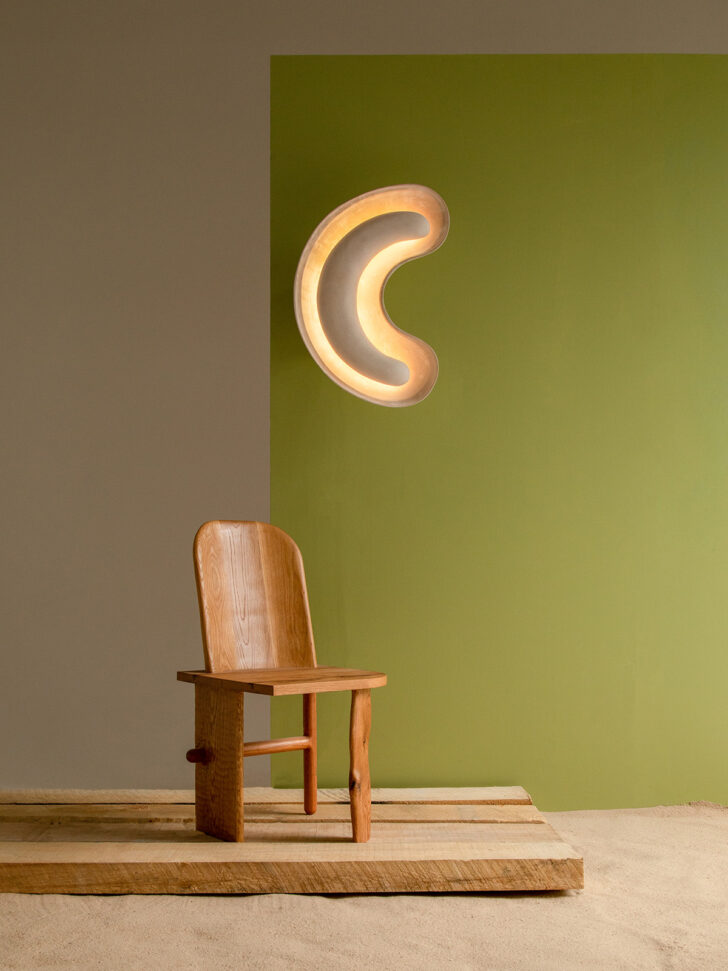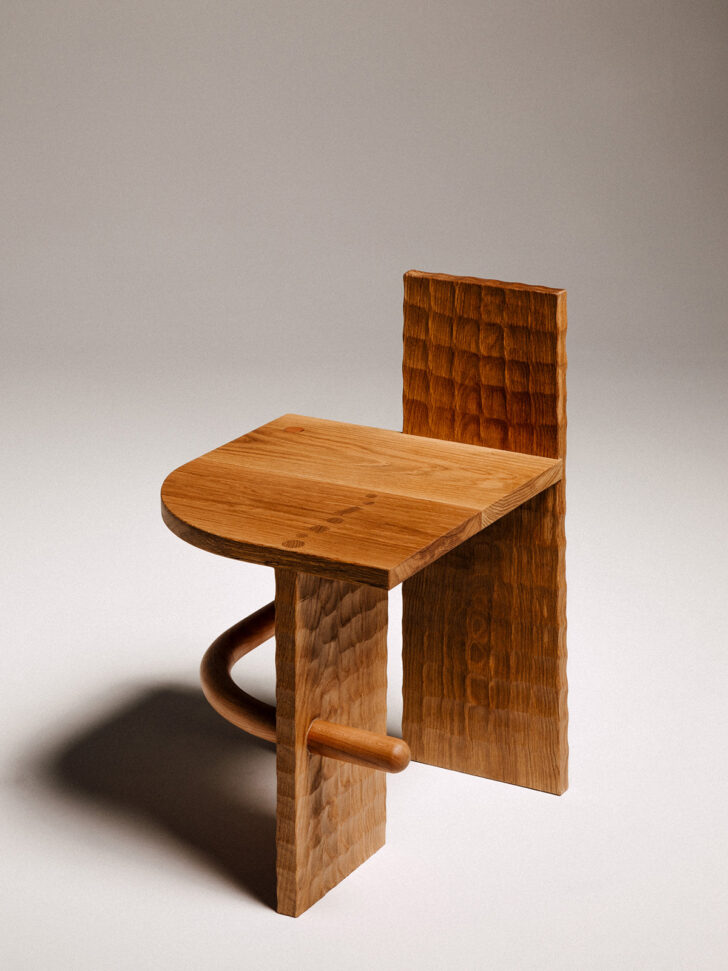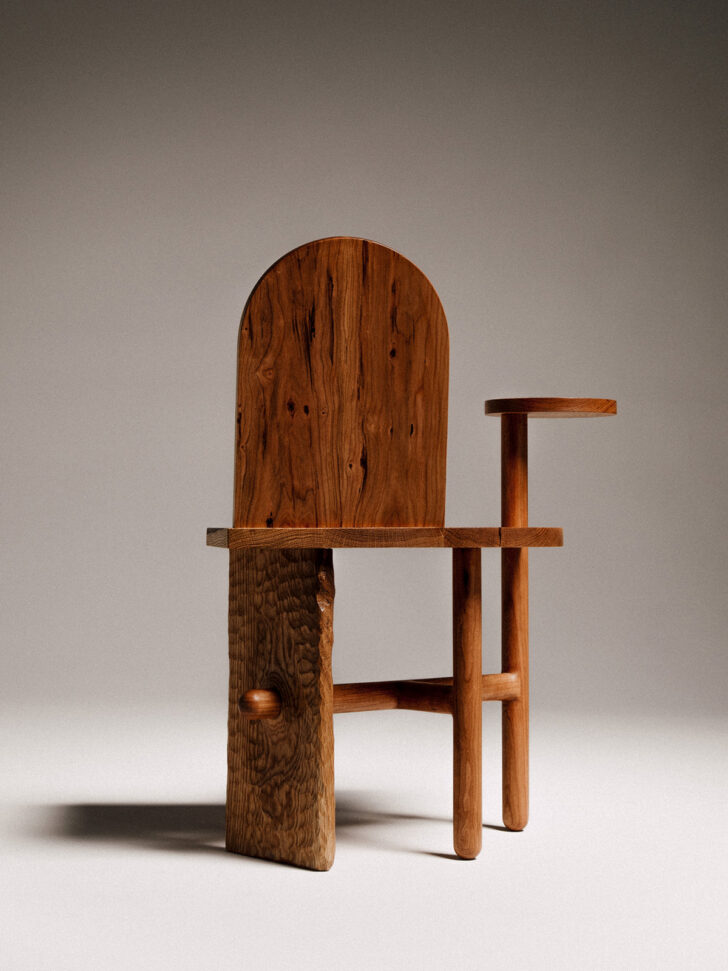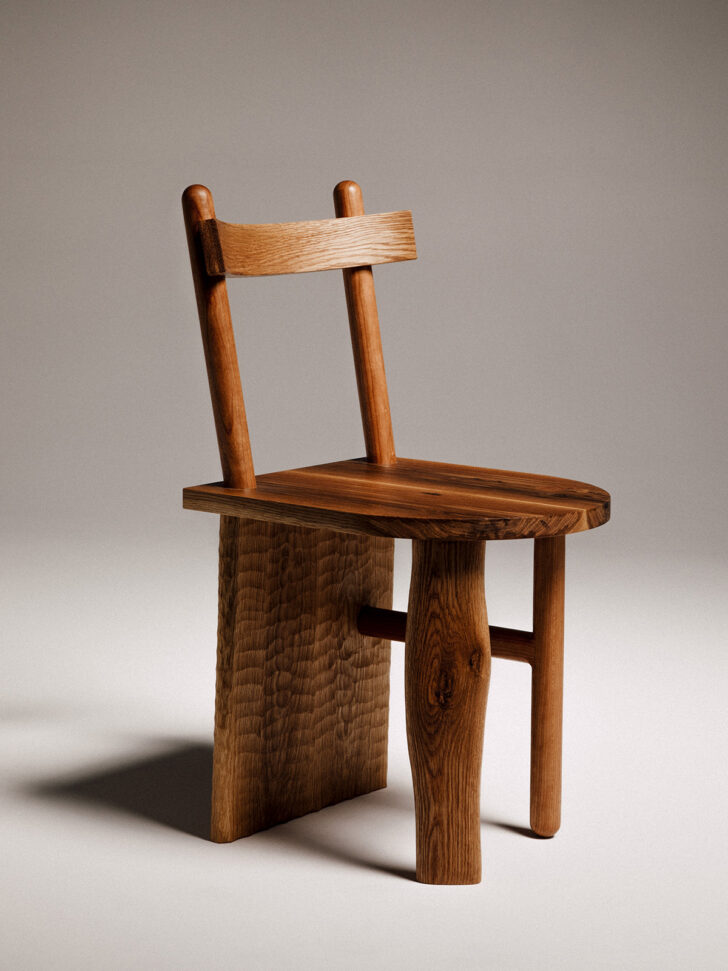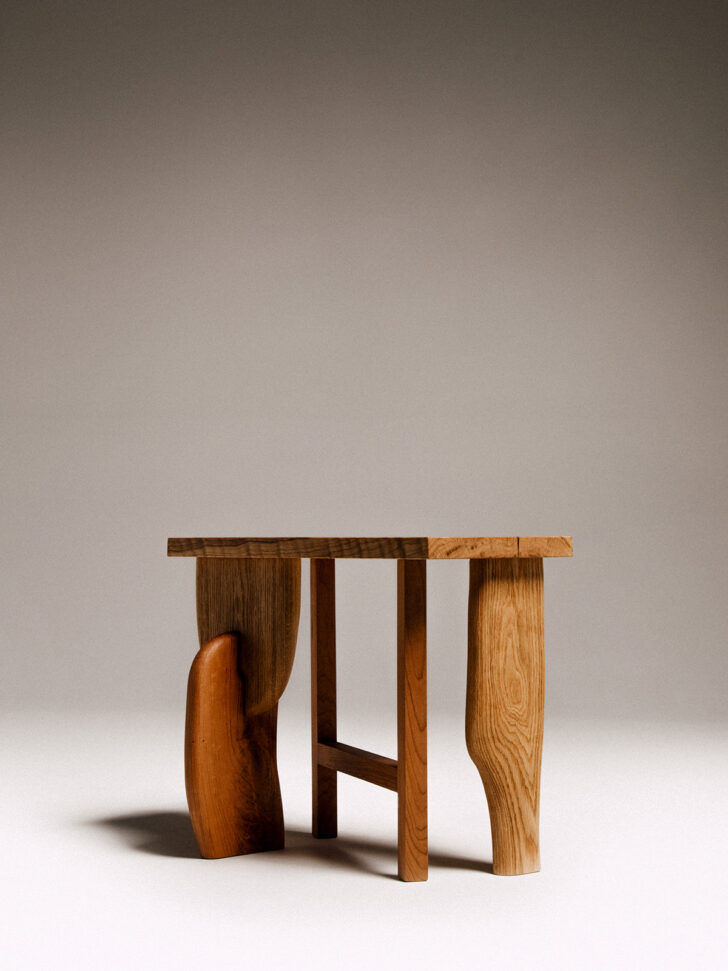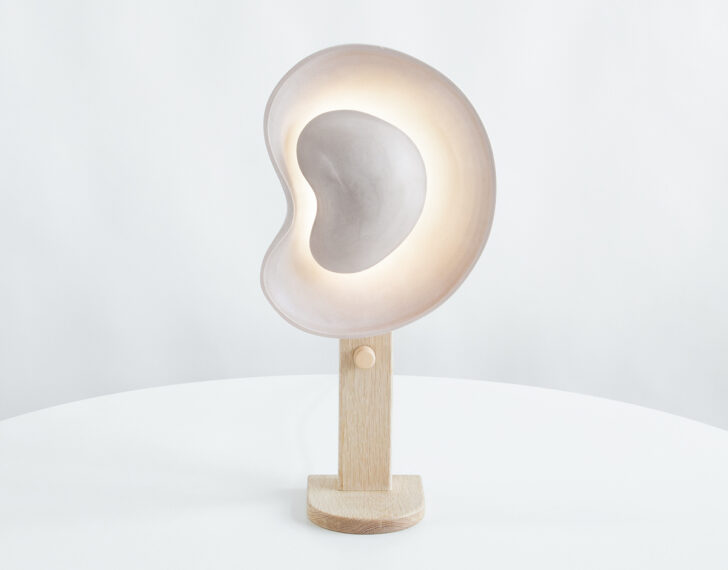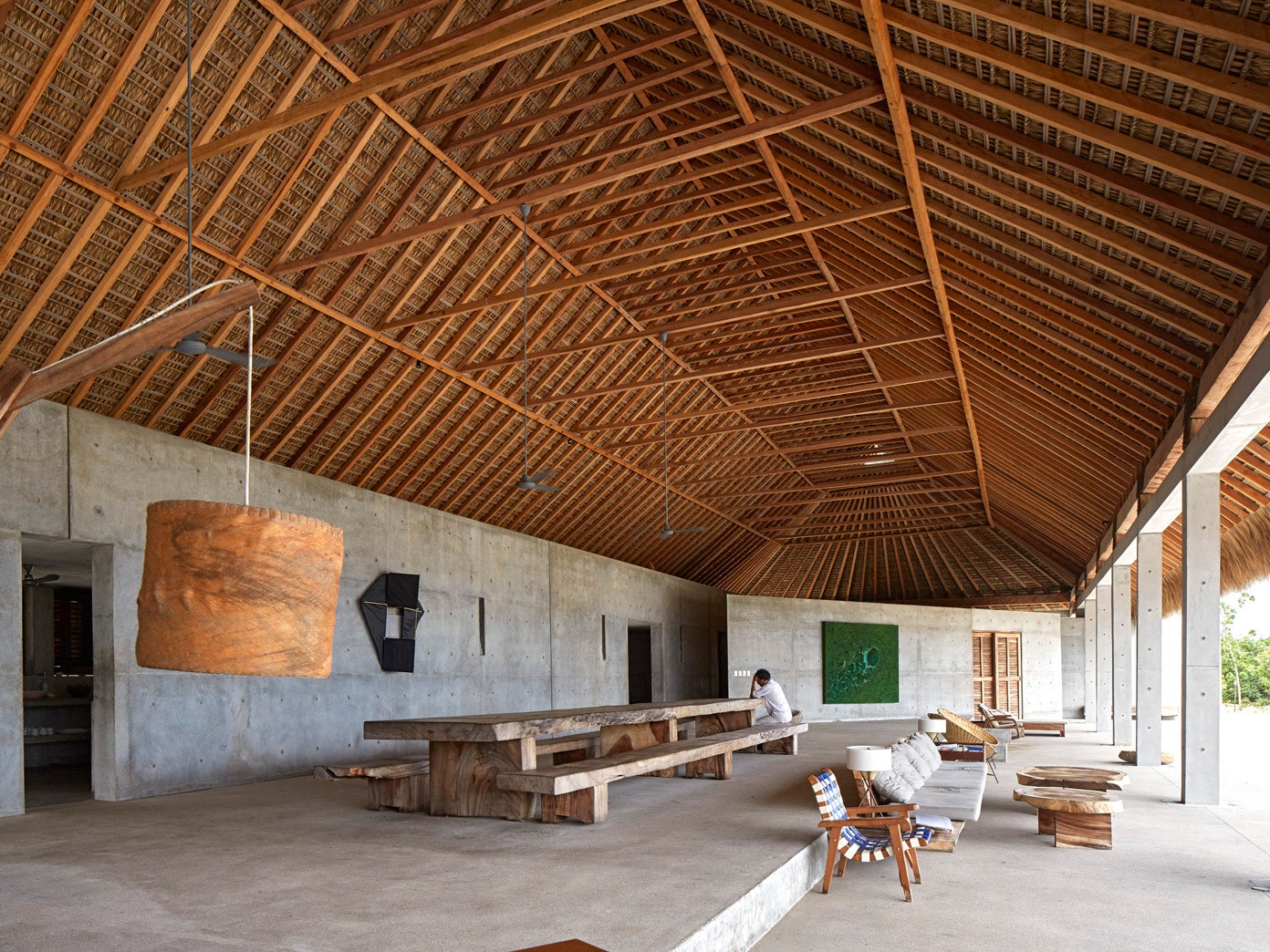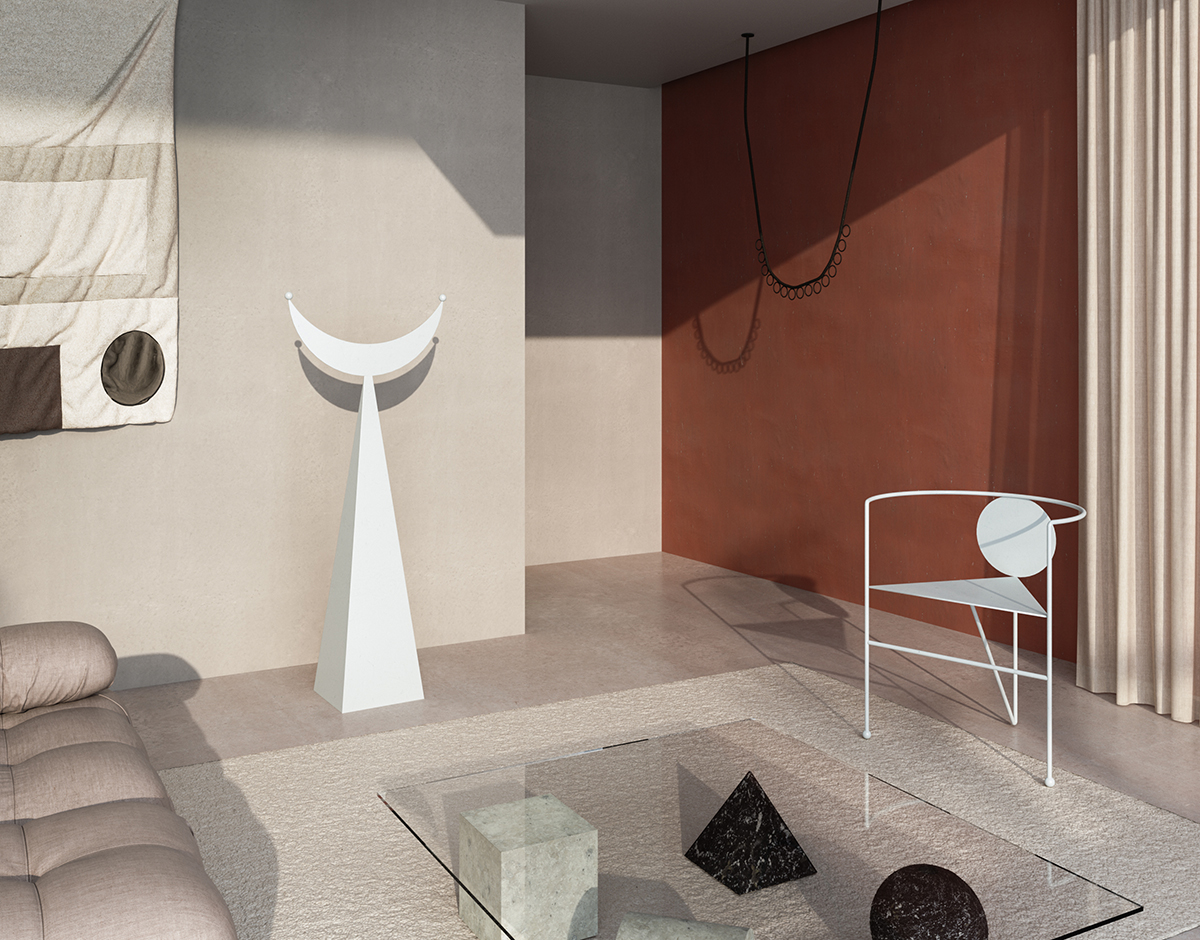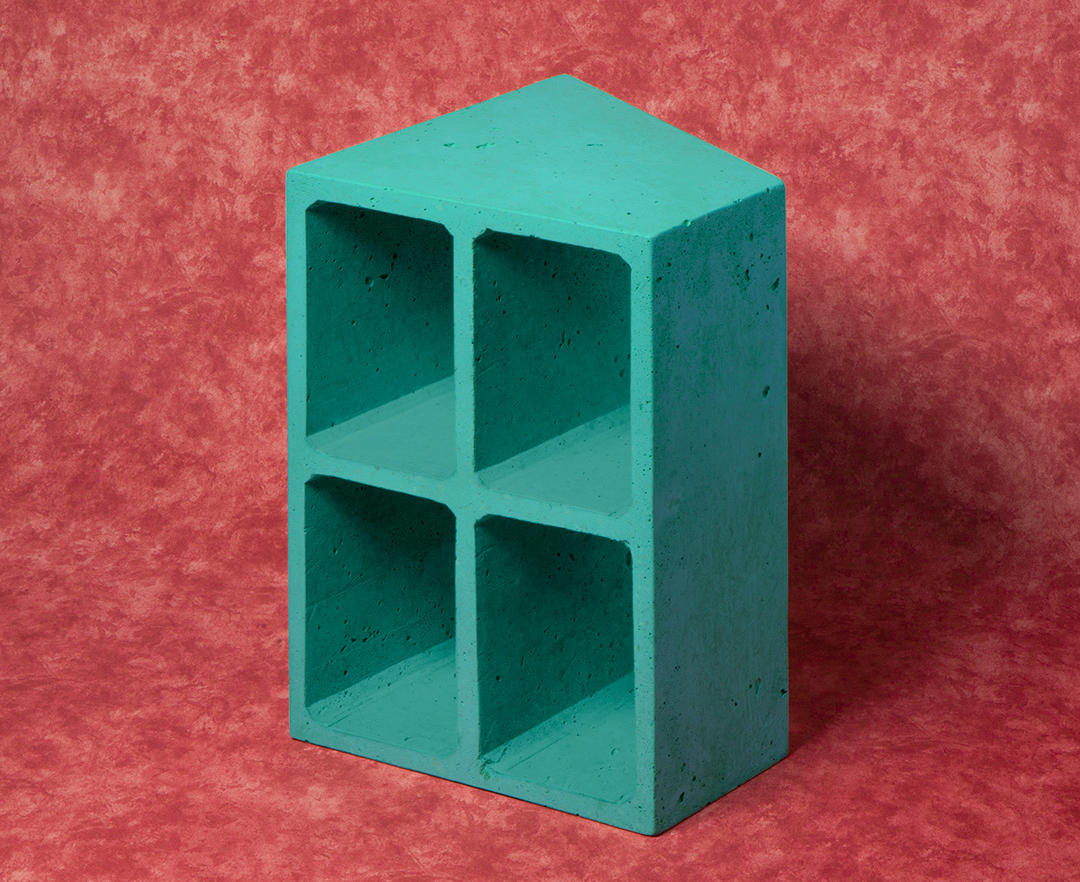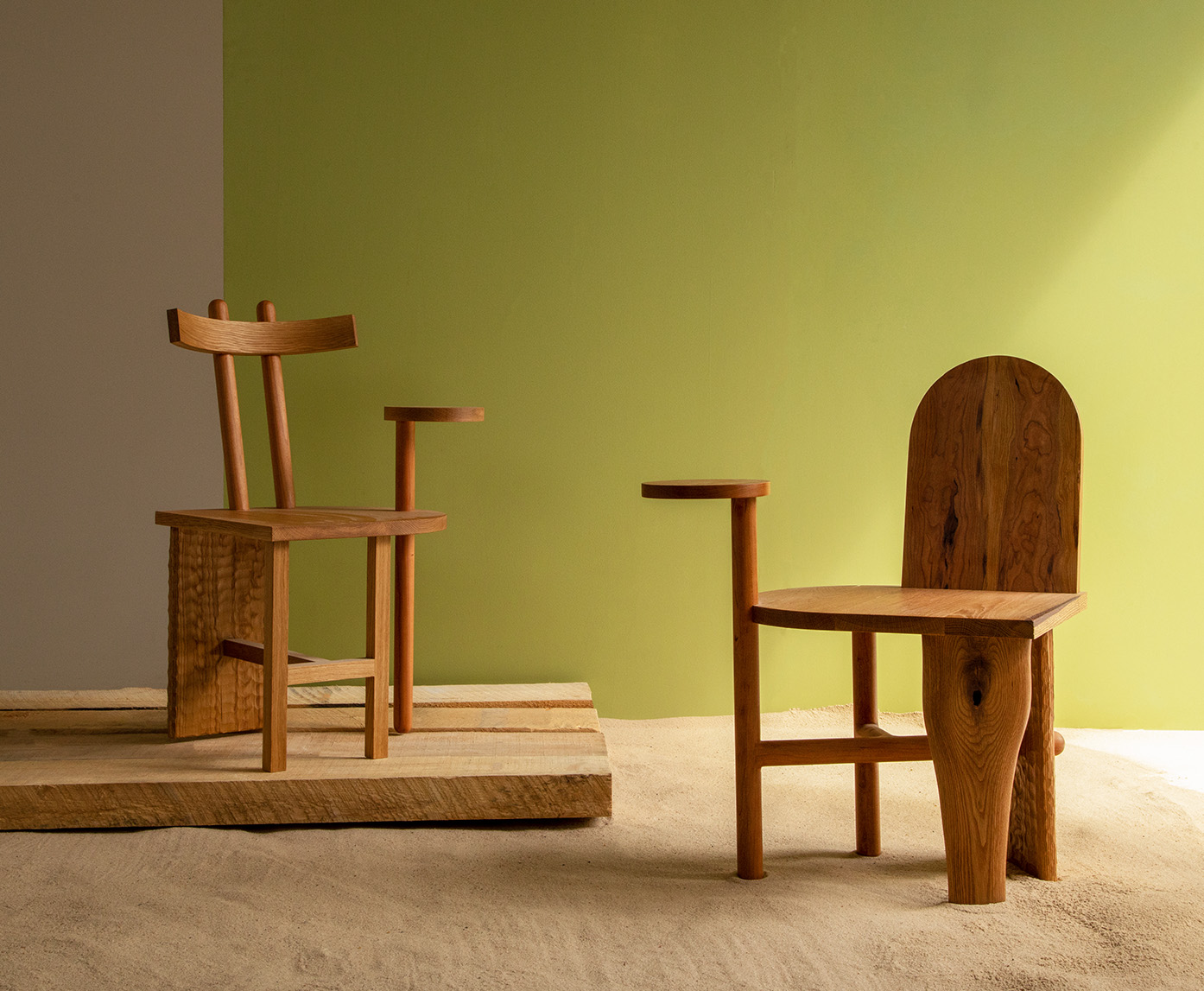
08.01.22
Q+A
This Brooklyn Designer is Trying to Create a Zero-Waste Studio
Coming from an art background, Nathaniel Wojtalik had no interest in creating furniture that was purely functional and offered no meaning behind it. But through Cultivation Objects, the Brooklyn studio he founded during the pandemic, Wojtalik has been able to find a way to craft intentional narratives by virtue of concept and technique to end up with designs that are beautiful and intriguing, yet still maintain a utilitarian quality. Cultivation Objects has so far released three collections of furniture and home objects. For the first, Wojtalik drew on his upbringing in the Colorado mountains, through forms based on rock erosion and earthy tones produced by a plaster finish he developed himself. The second collection is a smaller, intermediary series created while he was moving studios. It follows a similar aesthetic to the first, which he describes as “tormented by geometry,” but features darker colors and aggregates mixed into the plaster forms.
Wojtalik’s most recent work is a limited series of 18 wooden chairs, named Piece and Quiet, created based on the Cut-Up Method that involves making new works by mashing together old ones. He assembled the different chairs from prototypes and off-cuts found around his studio into designs that provoke a reaction when in use, such as forcing the sitter to adjust their posture. “There are a million beautiful chairs out there that are perfectly functional and easy on the eyes,” says Wojtalik. “But if I was going to make something, I wanted the process and act of making it to be as compelling as the final object.”
Outlining his plans to put some of the chairs into wider production, Wojtalik also chatted to us about his zero-waste ethos, his ideas for a similar limited series of 18 etched aluminum lamps, and the benefits of sharing his Greenpoint studio with a photographer friend.
PHOTOS BY CHARLES BILLOT
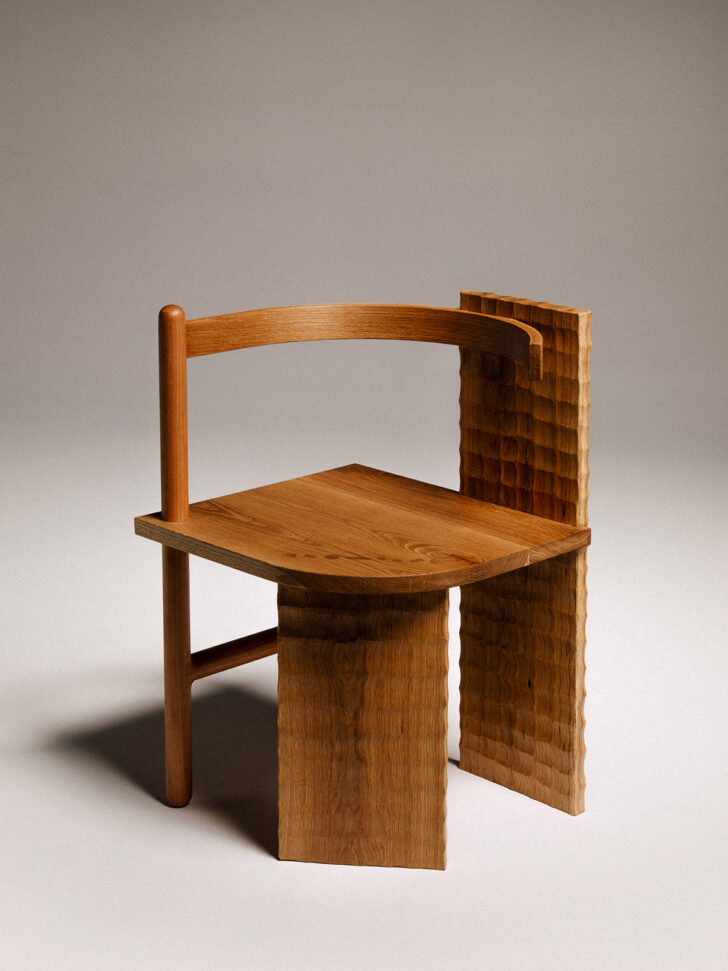
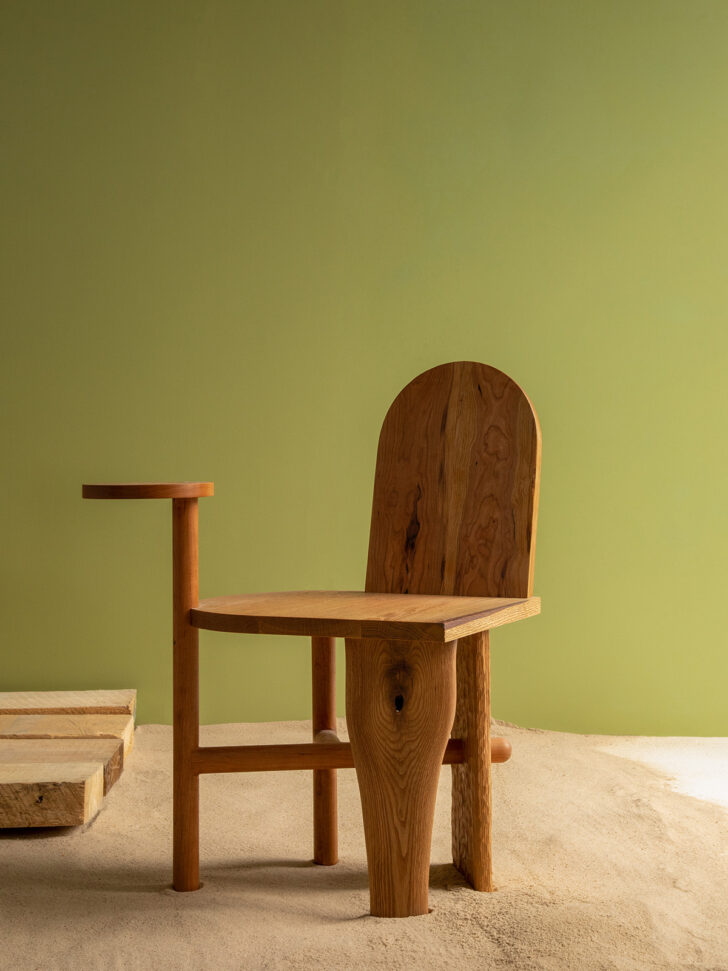
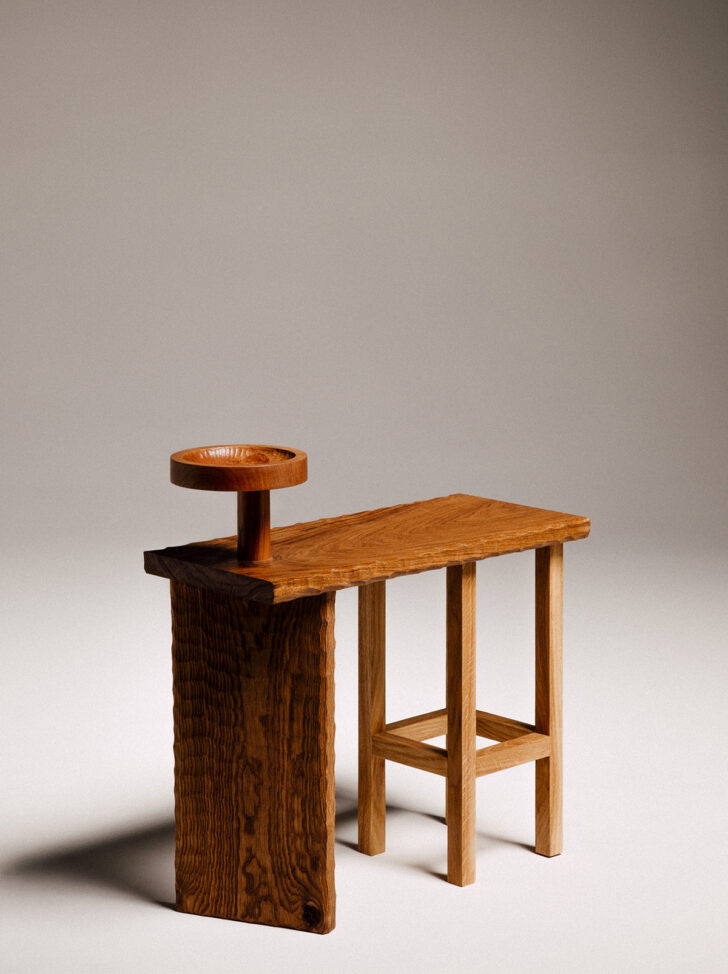
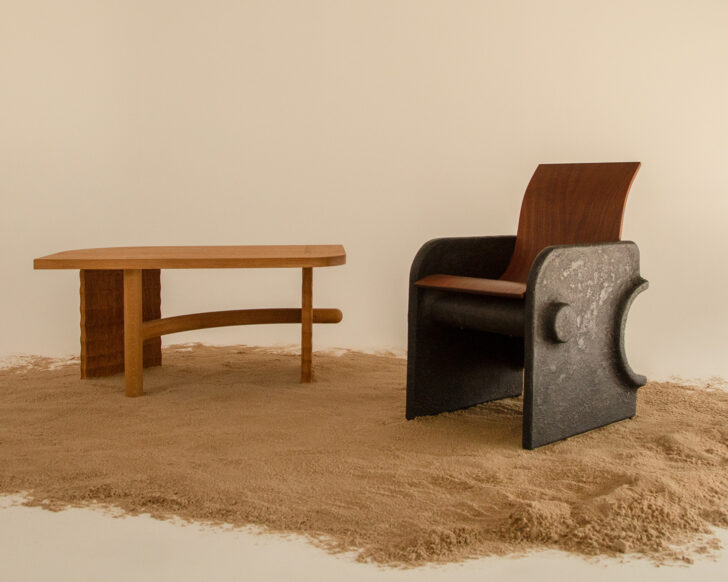
Tell me your story. How did you get into design in the first place?
I grew up in a small mountain town in Colorado, and moved to New York after I went to art school. In New York, I was doing store design and window displays, and that segued into designing sets for fashion shows and photoshoots. That whole time I was maintaining some semblance of an art practice. I always had an interest in doing furniture and lighting, but I was torn as to how to incorporate that into other stuff that I was working on. I’m usually interested more in the story of what I’m making rather than the actual objects, so furniture always presented a challenge because I didn’t want it to be 100% utilitarian. I was always worried that there would be a lack of meaning. There’s a quote from French philosopher Jean Baudrillard that I think goes something along the lines of: “We live in a world where there is more and more information and less and less meaning.” So I guess I had a guilt attached to creating furniture that didn’t embody an element of mindfulness.
During the pandemic, I started transforming my art practice more towards furniture. And I realized that I could incorporate those ideas into making furniture. There are a million beautiful chairs out there that are perfectly functional and easy on the eyes. But if I was going to make something, I wanted the process and act of making it to be as compelling as the final object. So I just started making chairs, and I made my first collection in 2020. And that was the starting point.
Can you talk us through the collections you’re created so far?
The first collection is called Earth Figures. Growing up in the mountains, I was really immersed in the natural world. And I was aware that how we exist in a space can sometimes be elusive. And so a lot of the forms that were included in that collection were based on the erosion of the land, or caves, or stones, but then had this tinge of pop aesthetic where the colors were really bright.
The finish is a non-toxic composite — kind of an earth-based resin. I named it desert fades, after the different tinted transparent layers that appear to turn yellow and orange and fuse with the landscape — but not completely because the form was originally white — and then it starts to take on the natural attributes of its environment. It’s probably a flaw in the chemical process or the plastic, but it has this somewhat nostalgic and beautiful way of degrading.
The next collection was intermediary, created during the height of when I was moving the studio, so it’s a smaller collection. It started on the same foot as the first, where it was about nostalgia and being of the earth, but then it’s tormented by geometry. A lot of the geometric forms tie back to the Russian Futurists, but then I fused with these stone textures and sweeping curves. The color scheme was also a lot darker. Everything was black with aggregates mixed in with it, and there were tones of the natural plaster that I was using to do like some of the lighting.
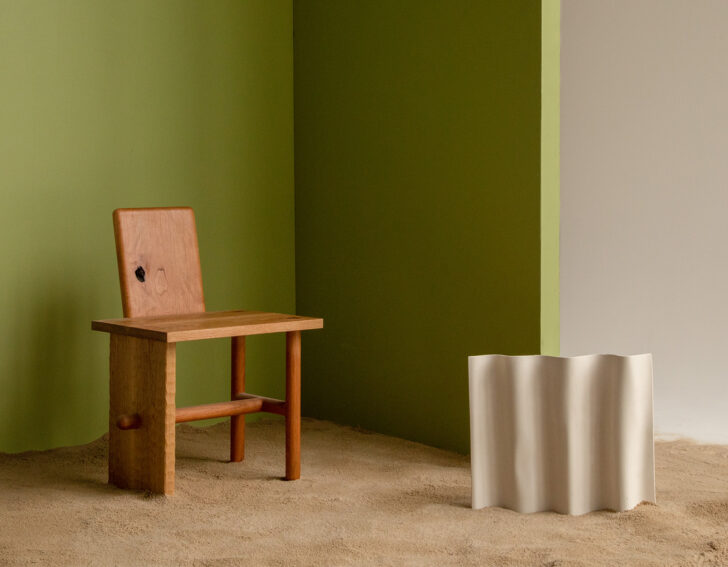
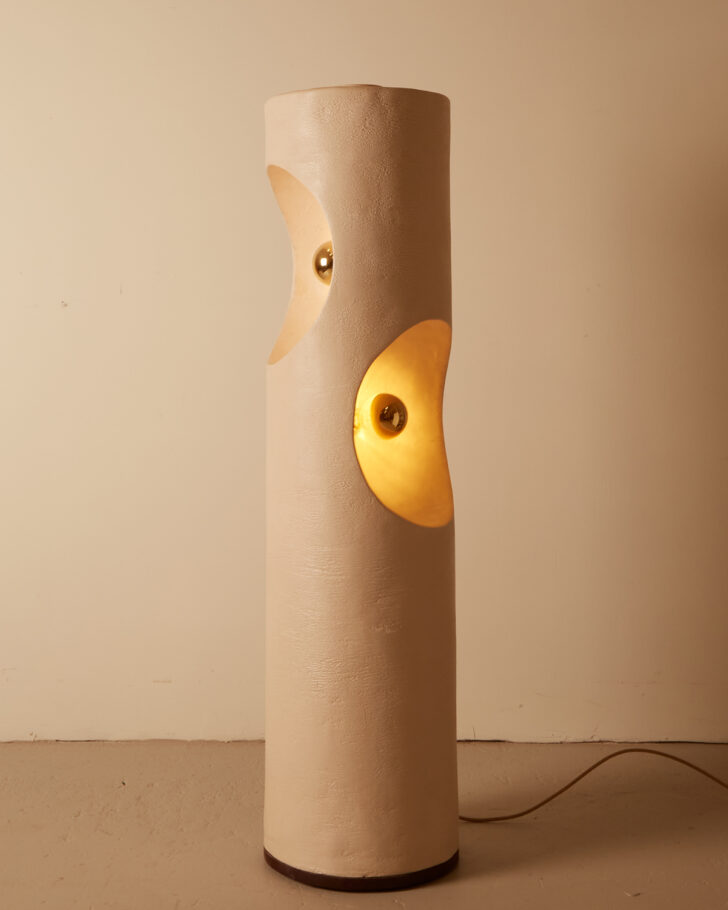
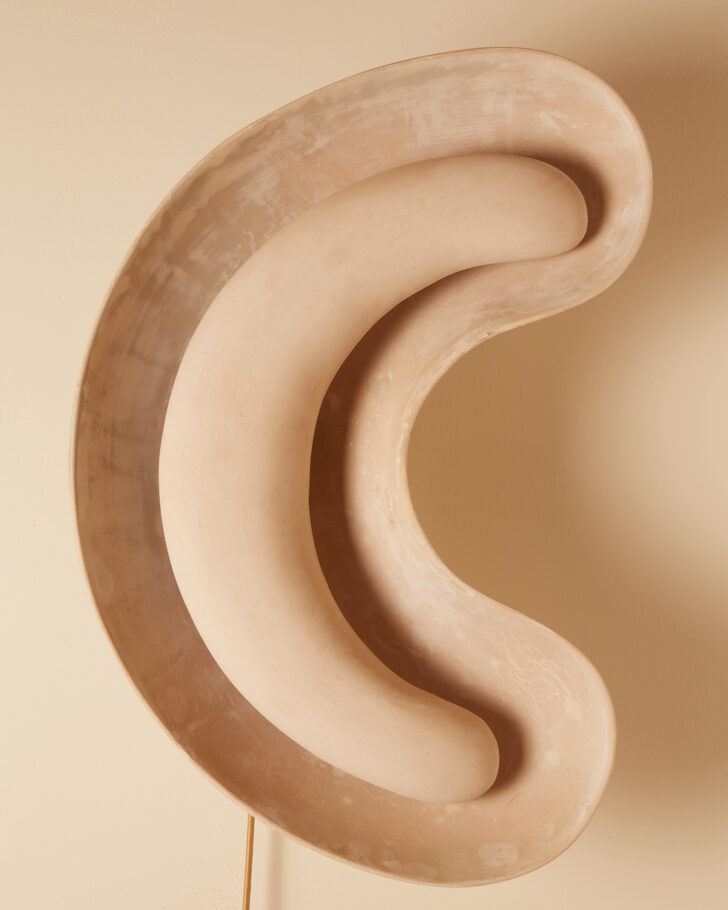
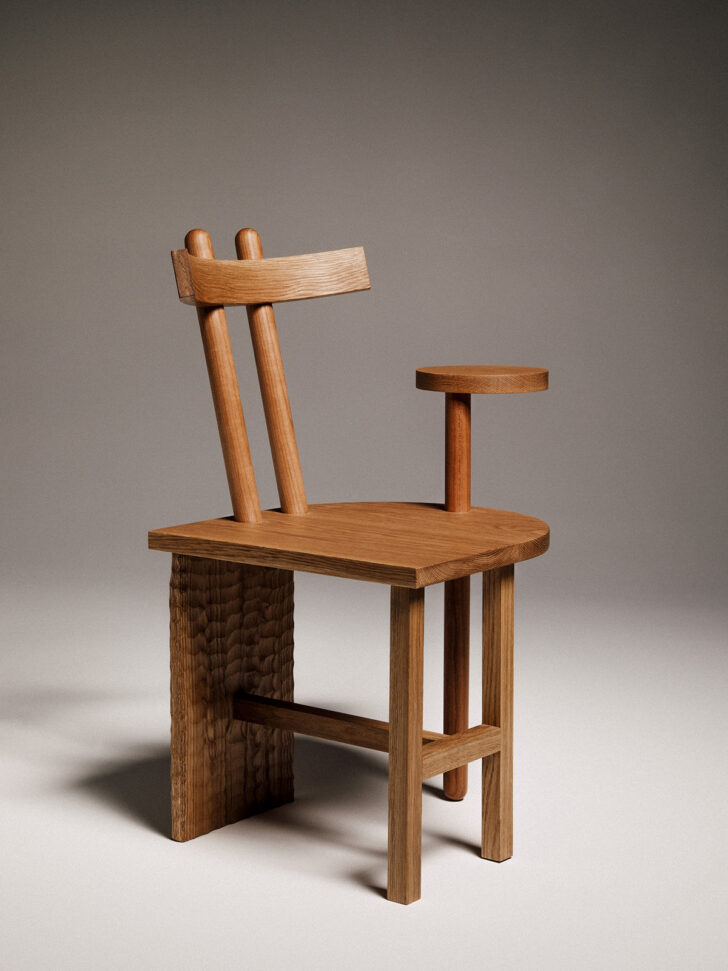
How did your most recent work evolve?
The newest series is called Piece and Quiet, and it was based on the idea of the Cut-Up Method, a sort of aleatoric technique that has been around for a long time. I think the first to use it were the Dadaists in the ’20s, specifically Tristan Tzara, and then later on it was kind of rediscovered by an artist named Brion Gysin, who did a lot of painting and collage and was heavily involved with the Beat poets, specifically William Burroughs, and they would collaborate.
The story of Brion Gysin’s Cut-Offs goes that he was doing collage work in his Paris studio, and to protect his work table he had laid down a bunch of newspapers so he wouldn’t cut into the surface. He then realized that as he was creating his work that the newspapers would float away, and as he cut through the layers, the words of the newspapers were creating new compositions and new phrases that he found to be beautiful.
So then he used those phrases and actually created poetry compositions and a bunch of sound recordings where they would actually cut up tape. He did a long recording in the BBC Studios in London, where they would physically cut up segments of magnetic tape. And it was crazy, it created these mantras that recycled, and reevaluated the phrases. By rearranging the same words in different ways, it creates this chanting. It was almost like a meditative experience.
For me, I realized that in the studio, there are always prototypes and partially constructed parts of things that all seem very random, but also beautiful as individual pieces. So I started taking all these off-cuts of partially completed prototypes, and recombining them into unique chairs. Sometimes I would take material that just sits in its natural form, like a beautiful grain pattern, and use that as the defining factor, and then play off of that structure.
The result is 18 chairs. I wanted to contain it to 18, because I feel like a lot of times when you don’t put constraints on your creative process, it’s easy to spiral out and you have too many options. So I made a goal of making 18 unique chairs that will never be reproduced, they’re all one-offs. And then they were collected into a book.
I’m going to kind of carry on that process in the future. I think the next series is going to be 18 lamps. Because lighting is always compelling to approach, there’s a lot you can do with it. It’s very beautiful, I think.
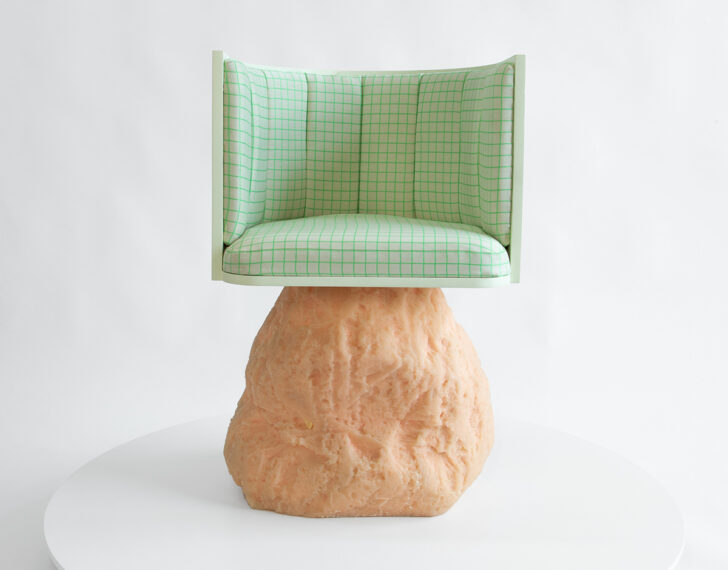
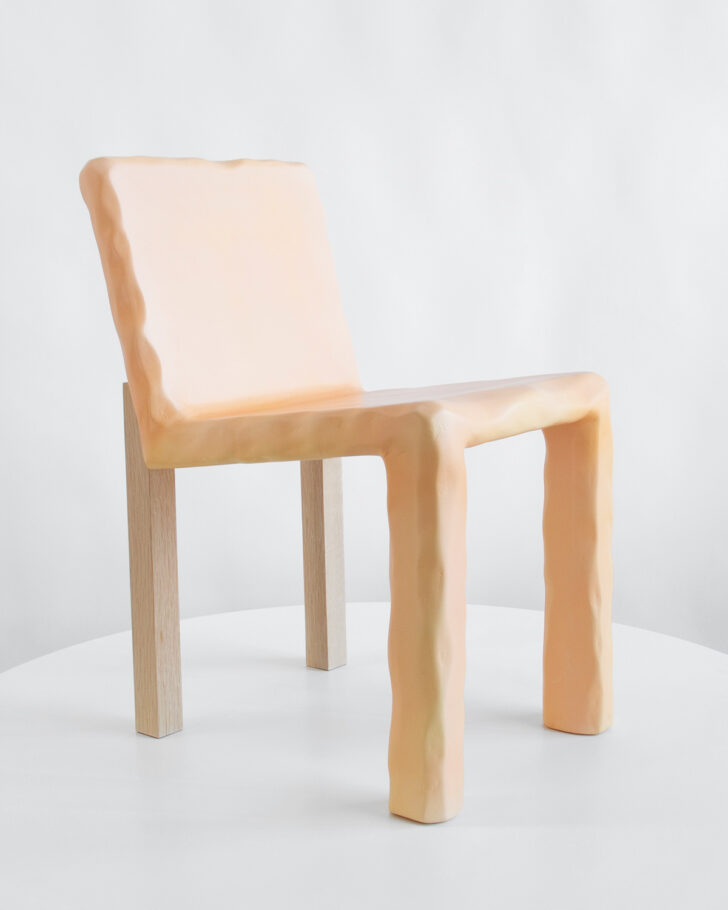
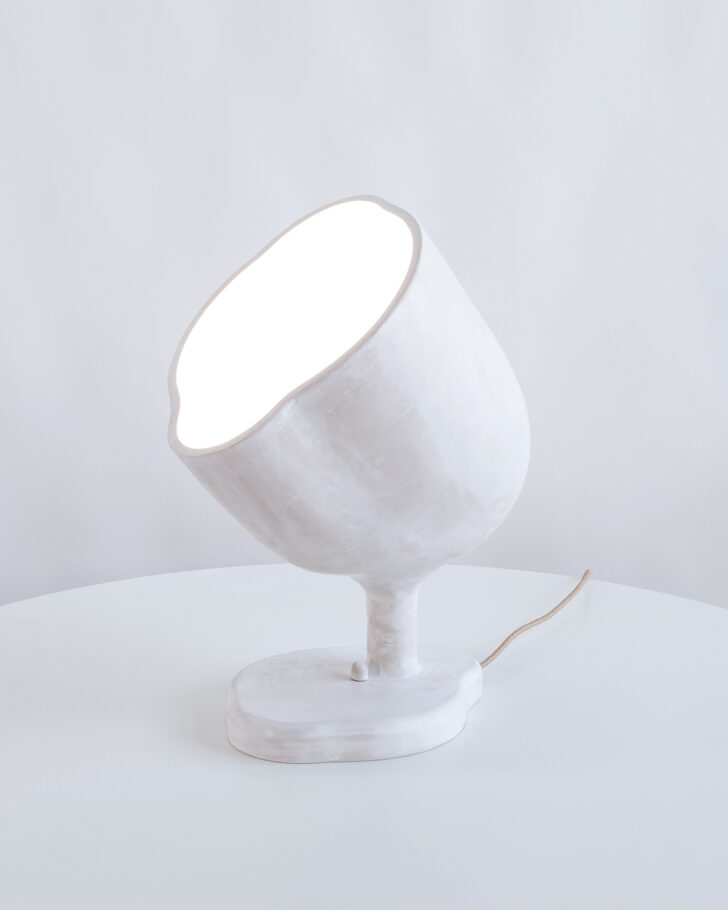
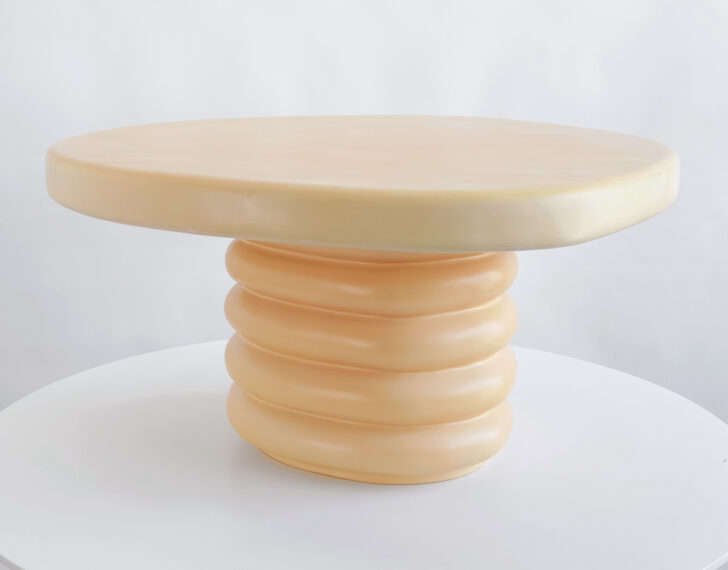
Visually, these three collections look quite different. But are there themes or ideas that carry through all of them?
Ultimately, if you look close enough, there’s always a strong geometric reference to everything I do. Obviously, I’m always trying to research and rediscover, and alter my process to how things are going at that moment. But I think I always want all the objects to patiently sit in that liminal space between the intellectual, the spiritual, and the functional. Functional in the classical sense, where it’s utilitarian, grounded, and tangible. But then I’m interested in how that collides with the story. And I think that the story is something that I always try and focus on, because I just want when people sit, literally and metaphorically speaking, with the furniture.
There’s something that’s off-kilter with some of the chairs. When sitting, you have to adjust your posture and allow yourself to maybe not be as comfortable as you would normally. But they’re still functional enough to sit on and have a conversation, or consider life in a slower sense. And I think that’s important as an overarching intention, rather than an aesthetic decision. I guess I’m less tied to a specific aesthetic choice, but I think that my intention ties everything together.
Where do you make your work?
During the pandemic, one of my close friends — who is a photographer and film director — and I rented the ground floor of a warehouse building and built it out over the course of six months. The front of it is a full photo studio, and then the back is where I make all the furniture. It’s a pretty classic woodshop with tools for the most part, and I also do a lot of casting. It’s a very flexible space because I’m always trying to reinvent the wheel or learn a new process. It can take on different ways of working and just keep things interesting for me.
From an ethical standpoint, I don’t use any materials that are environmentally hazardous. For instance, I don’t use any petroleum products in the studio at all. All the wood has to be domestically sourced. Even down to taking the sawdust from the milling machines, I’ve started using it to make plant-based binders and new composites that I can put into castings and create new surfaces that I can make into more furniture pieces rather than throwing it away. So I have a focus on zero waste. I want the studio to be as ecologically sound and environmentally friendly as possible.
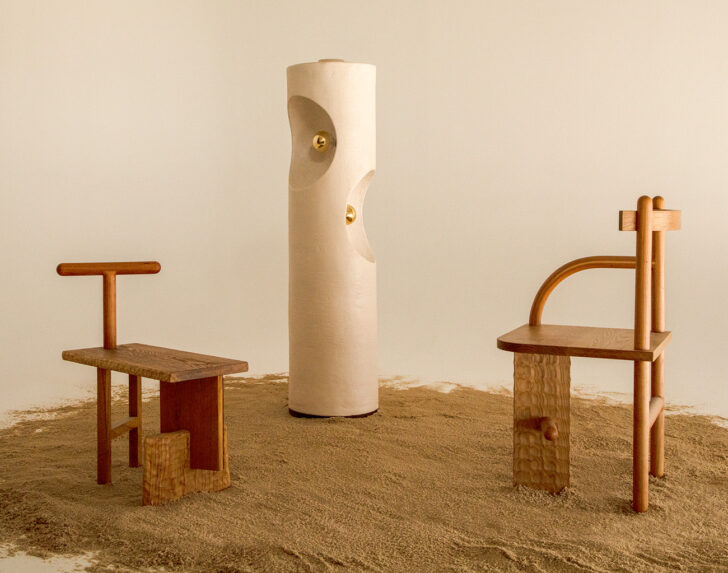
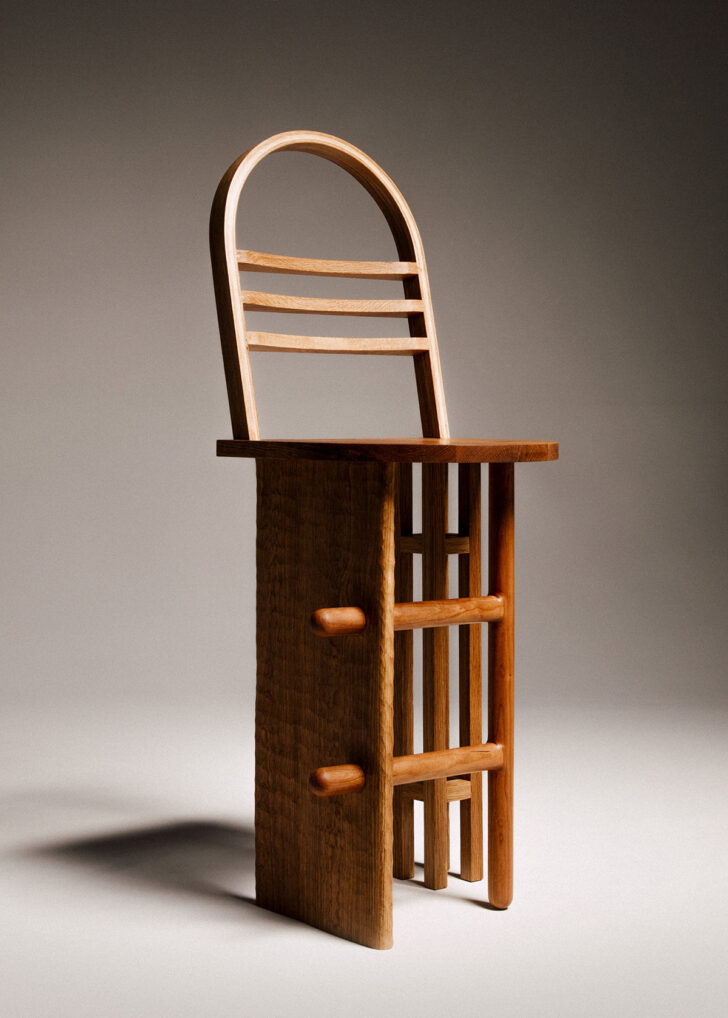
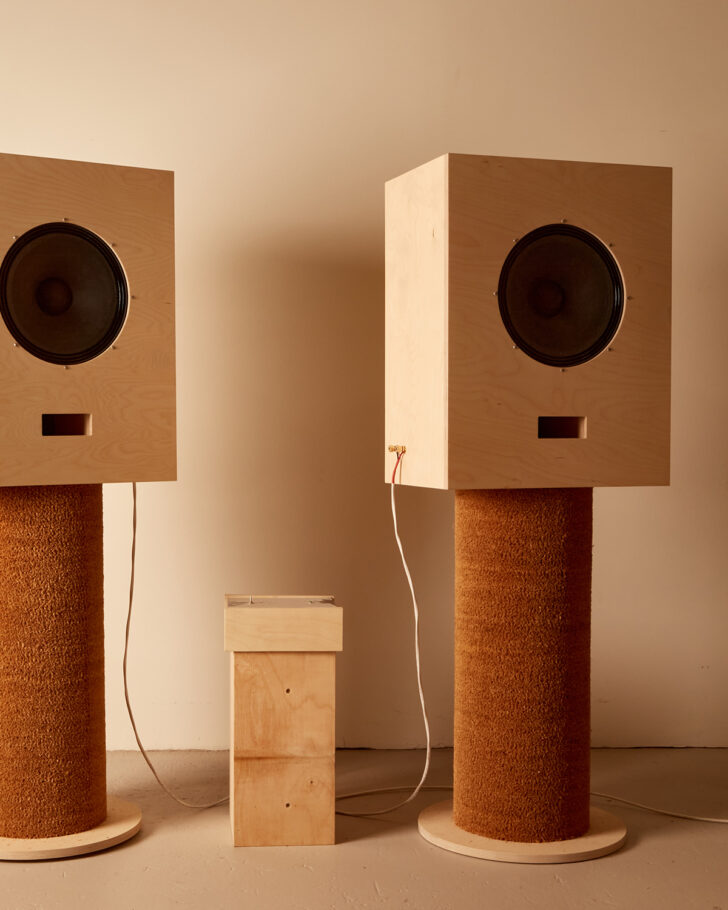
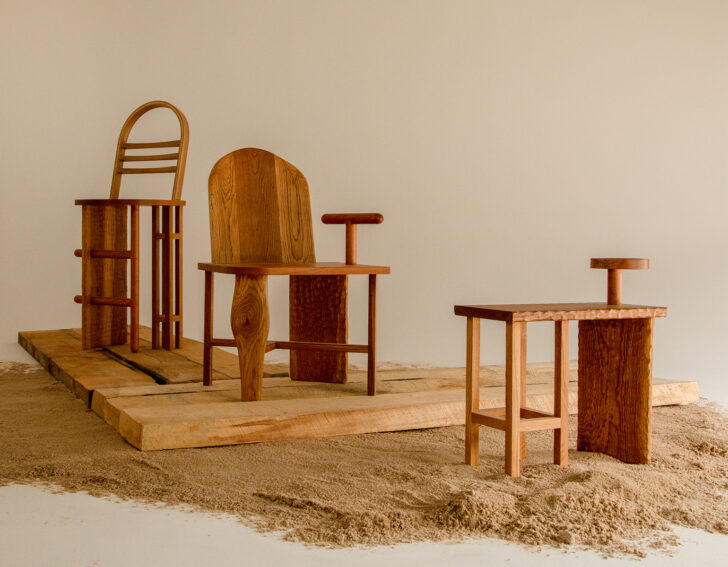
There seems to be a pervading consciousness of how wasteful the furniture industry can be, particularly on a mass scale. So a lot of designers are focusing on small production, and creating limited runs.
It’s easier in my case, because I do work on a much smaller scale. The studio is a studio, not a factory. So I think that upscaling some of these processes can be challenging, but I’ve spent a lot of time researching different ways to recycle materials and even if it’s something that hasn’t really been done – I’ve made a lot of prototypes and mistakes and stuff that just didn’t work. I would love to share my experiences so that others can start implementing these processes. I think it should all be open source, and it would be a really nice goal to create a community of people that are interested in exploring the ways in which we can better utilize the resources that we have.
I’m sure there’s a very high demand for that kind of information, because a lot of designers are working in a similar way to you.
Yeah, totally. I always love when other designers and artists come to the studio and just hang out. We’ve tried to make the studio as welcoming as possible. And so it’s really nice when people come over and can share knowledge. I think one of the reasons that a lot of us become artists is to have that community and those intellectual connections with others.
Does your studio companion photograph your pieces? Or do you do that yourself?
He does, he takes all the ones that look good. It’s always nice to have another person that can put a new take and a new perspective on something that you make. Often you put on the blinders, and you don’t understand what you’re doing until someone informs you of your vision.
You mentioned that lamps will be the next series. Do you have any ideas about how they will turn out?
I’ve been experimenting with a lot of different processes. I typically put in a lot of thought and experimentation before I pull the trigger on stuff. Recently, I’ve been doing a lot of saltwater etching of aluminum, which I then polish, so I can actually etch photographic images on the aluminum panels. I think those will work as the reflectors and the lenses for some of the lamps. And then some of the other materials will end up referencing previous collections where there’s plaster, because I really like the organic nature of being able to hand-form things that clash with the structural and geometric shapes that some materials have inherently stuck in their form.
But pairing that with something that is a little bit more malleable I think is a fun, nice way to work. So it’s gonna be probably aluminum and then a plaster base, and maybe adding another element is still yet to be decided.
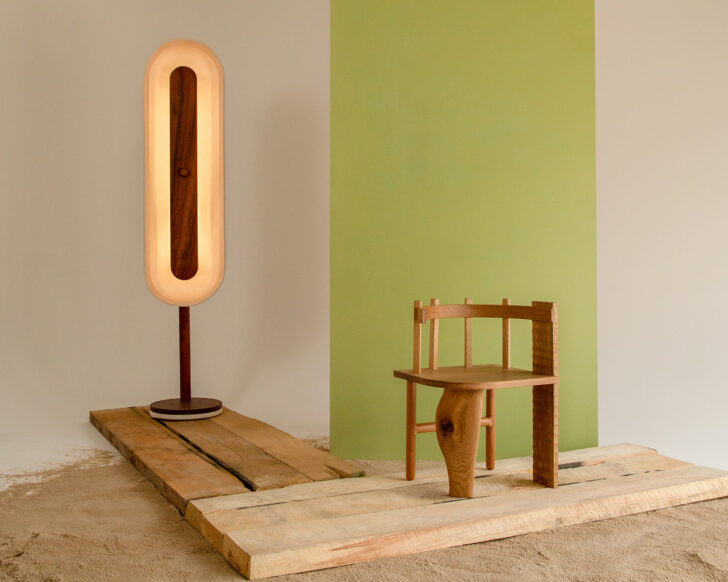
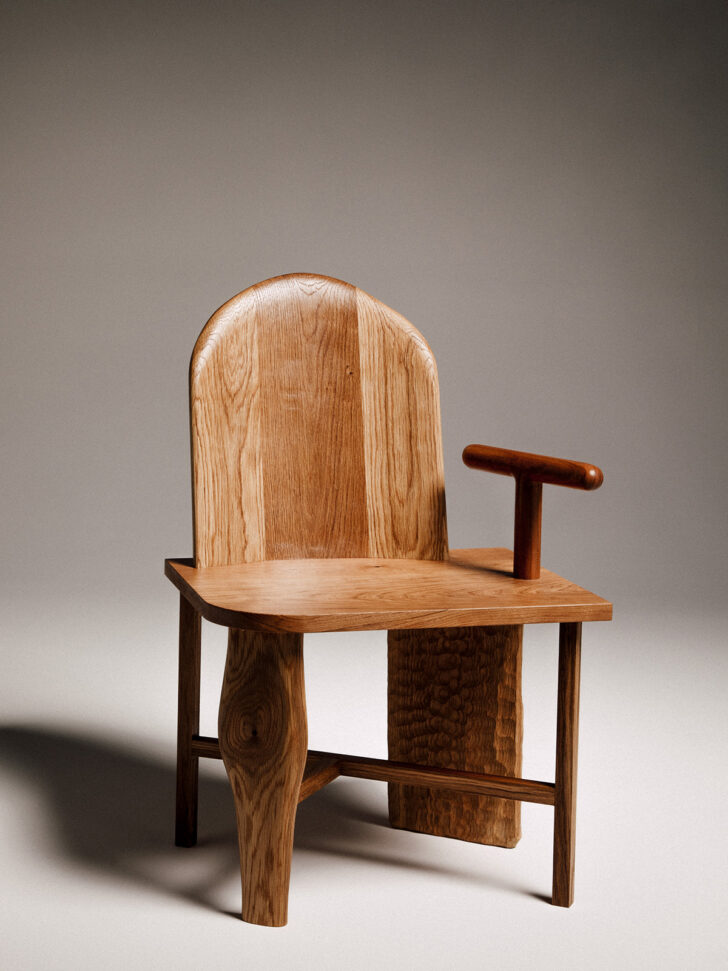
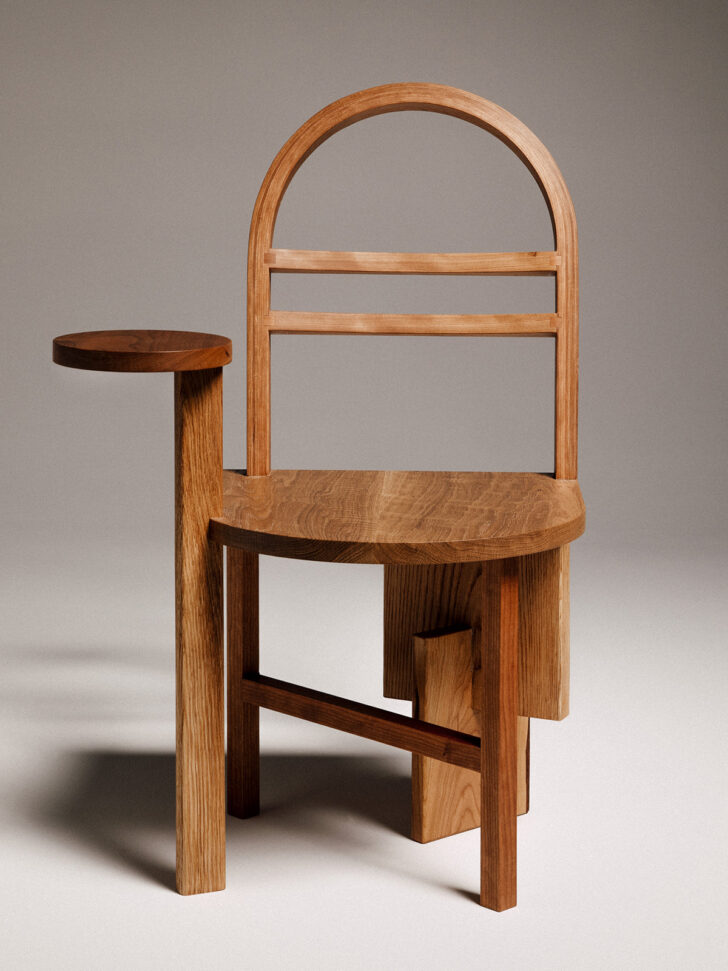
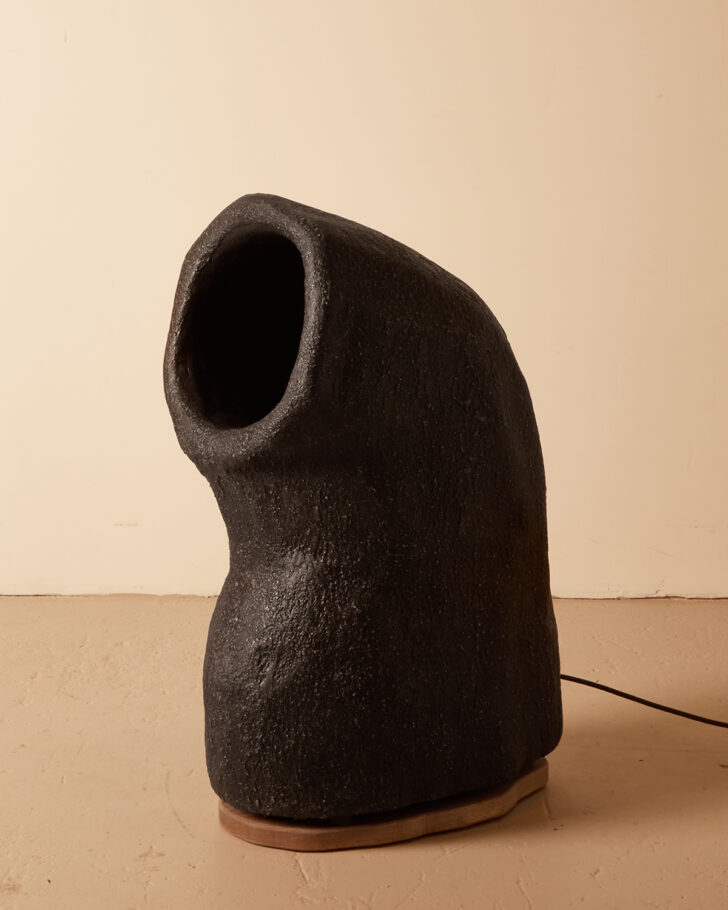
Have you thought about taking any of your designs and making larger runs or batches of them?
Yeah, I actually have started that. For the previous collections, specifically Piece and Quiet, I’ve been distilling those ideas and creating the ability to make a production run of a specific style. I’ve started prototyping a couple of chairs that are based on the shapes and the forms from Piece and Quiet, which would be produced on a mass scale.
One of the reasons for doing this is for the accessibility of the furniture. A lot of people have shown a lot of interest, but the edition is so limited, and I don’t want it to be unattainable if people want to have a piece. So I’ve started distilling down the designs into more production-ready variations of these. But just to make one chair, like there’s so many jigs and setups and processes that are involved.
Are you potentially looking for manufacturing partners to pick this up?
Maybe not. I might just simplify the process so that it doesn’t have to be my hands that does every specific part. Because a lot of the joinery in the chairs is not a no-brainer to put together. It’s not something that you can just throw on a CNC machine and let it rip. So I think I’m just simplifying it so that I could have someone else in the studio do it, and I could still participate in the process but not have to do everything myself. I don’t know if I necessarily want to be doing mass-produced items, letting it out of my hands and then showing up at a factory and then shipping out.
You still want to keep control over it.
Yeah. I believe the energy you put into something is reflected in the final output. I don’t just want it to be a manufactured item, I want it to be something that’s special.
